Tommy Tran has over 25 years of experience in visual effects. He joined the FuseFX teams in 2013. He has worked on a wide range of shows and today he explains his work on the 3rd season of The Orville.
What was your feeling about being back in The Orville universe?
I was excited, to say the least. We all knew that Seth MacFarlane had something big in store, but no one knew exactly how big until we received the script for episode 301. The first act alone had enough VFX shots to fill an entire episode. We couldn’t wait to start while bracing ourselves at the same time.
How was this new collaboration with Show Creator Seth MacFarlane and the Production VFX Supervisor?
FuseFX has been working on The Orville since Season 1, so I can’t say our relationship was new. Still, working with Brandon Fayette, the Production VFX Supervisor, was great and as good a working relationship as one could wish, considering the sheer amount of work needed for the season. Brandon was meticulous, precise, and has a strong CG background. This forced us to bring our A-game to every sequence and shot because we knew he would catch the slightest imperfections. Brandon and I worked very well together. It was always a collaboration. He listened to what we had to say and agreed when appropriate, one of the many things I respect about him.
As far as working with Seth, I didn’t get to work directly with him often. However, I can tell you that not only is he a creative powerhouse, but he is also a very compassionate man. He would often reach out to say how appreciative he was of us and the work that we were doing. That meant the world to the team and me to have a person of his stature reach out to us directly.
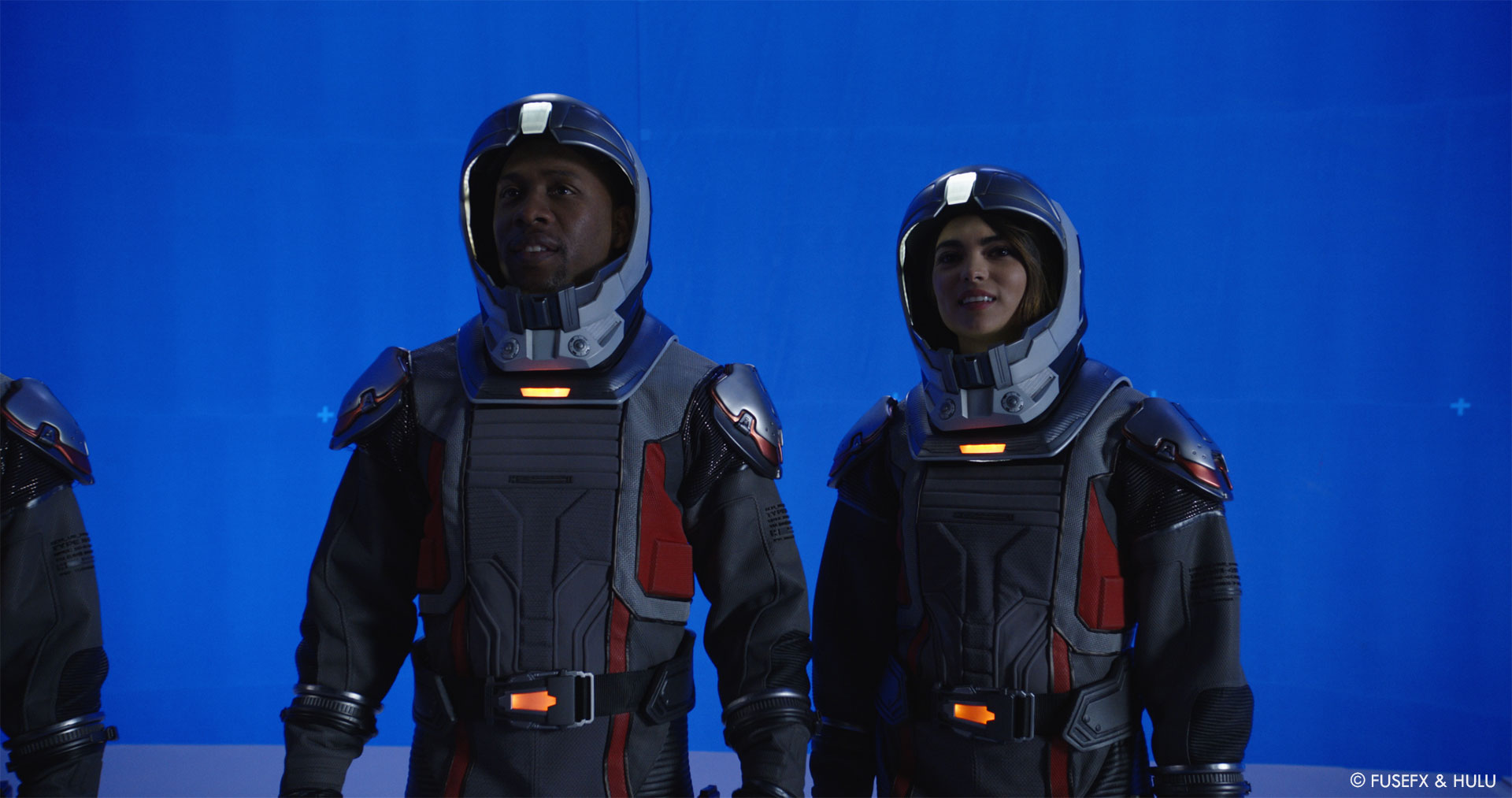
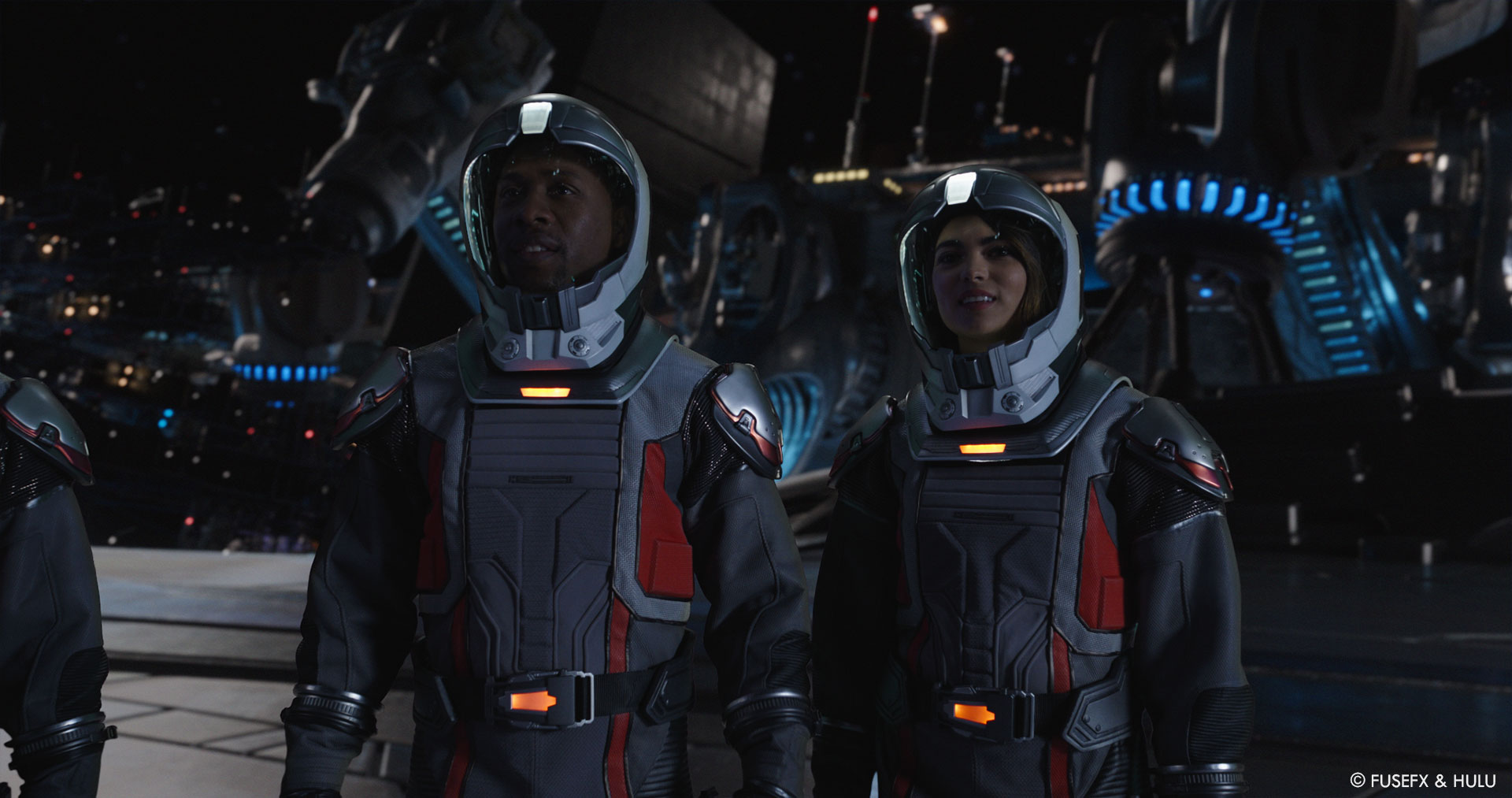
How did you organize the work with your VFX Producer?
Our VFX Producer Samantha Hernandez, our VFX/DFX Supervisor JV Pike, and our CG Supervisor John Rouse, handled most of the organization and distribution of work. Sam updated our internal database daily, if not hourly, and maintained constant contact with Production Management to ensure we had enough resources to keep the process flowing smoothly. JV and John, on the other hand, organized the distribution of the work to the different departments and artists.
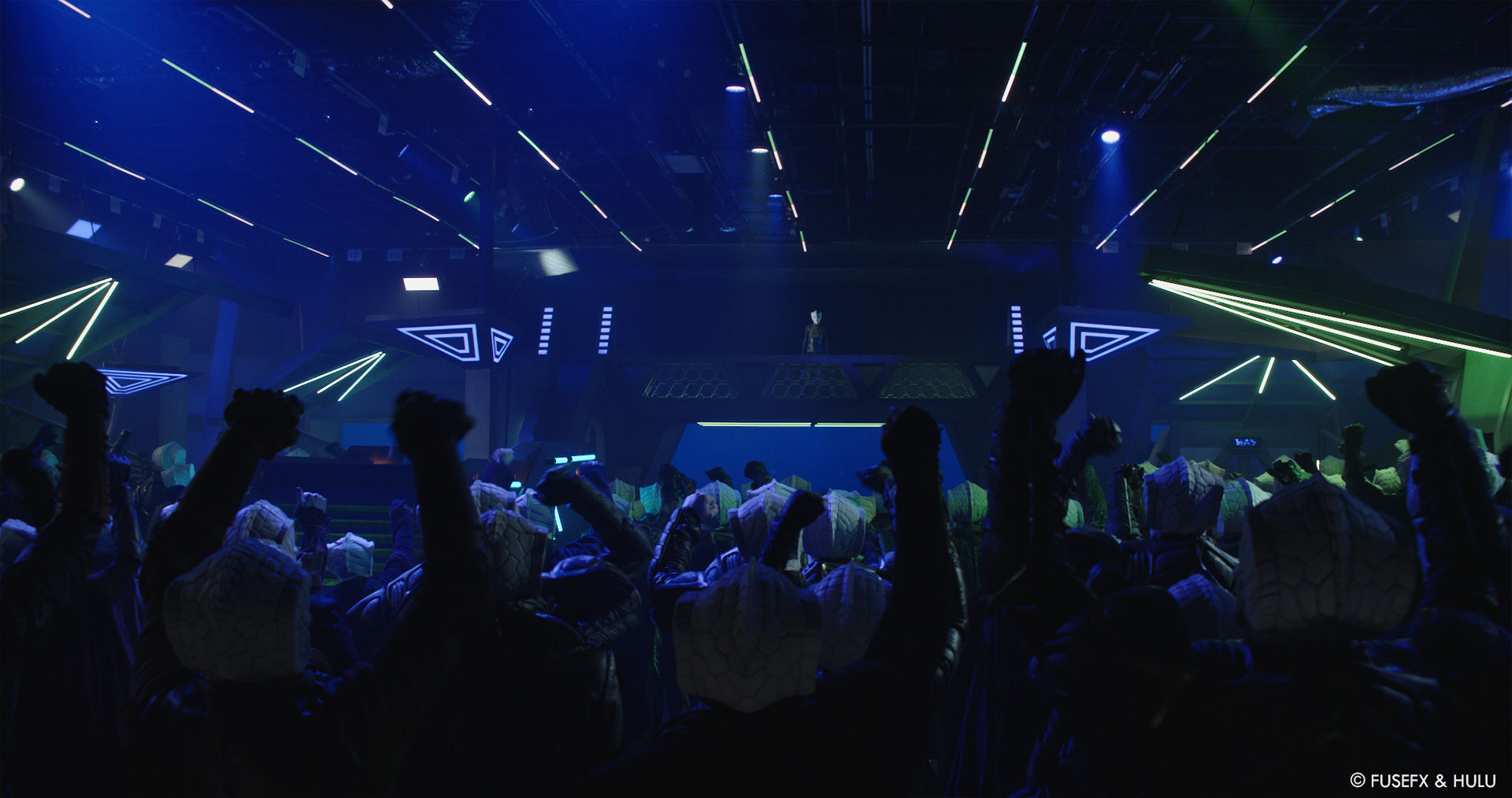
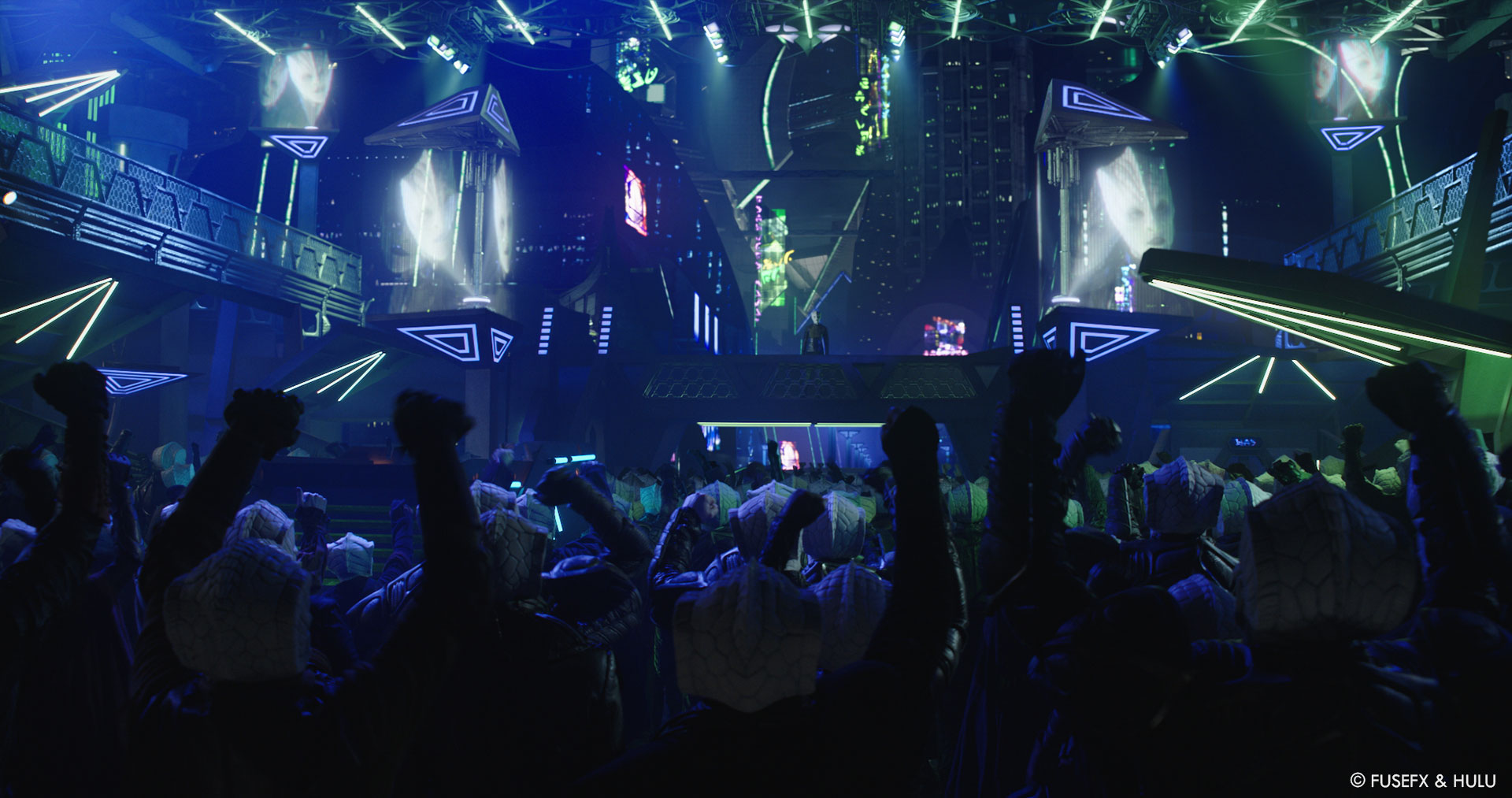
What were the main challenges in this new season?
Building new environments, I would say, was the biggest challenge this year. In this season, we visited numerous new alien worlds. This is where our opportunities came.
We developed the Jovian planet and its hurricane-like atmosphere in Episode 301. In Episode 304, we created Krill City and its massive city infrastructure and developed the Enchanted Mushroom First Environment. In Episode 308, we made the Canyon Battle scene utilizing Unreal Engine. In 309, the biggest of them all, we engineered the outpost on Draconis 427, an extensive build-out of hundreds of buildings, a central reactor core, and a subterranean trench that was the showcase of the sequence. Not to mention that in tandem with the base and the battle that ensued on the ground, we also worked on the sky battle that raged above. These two battles were so big that we had to divide up the team to deliver the episode on time.
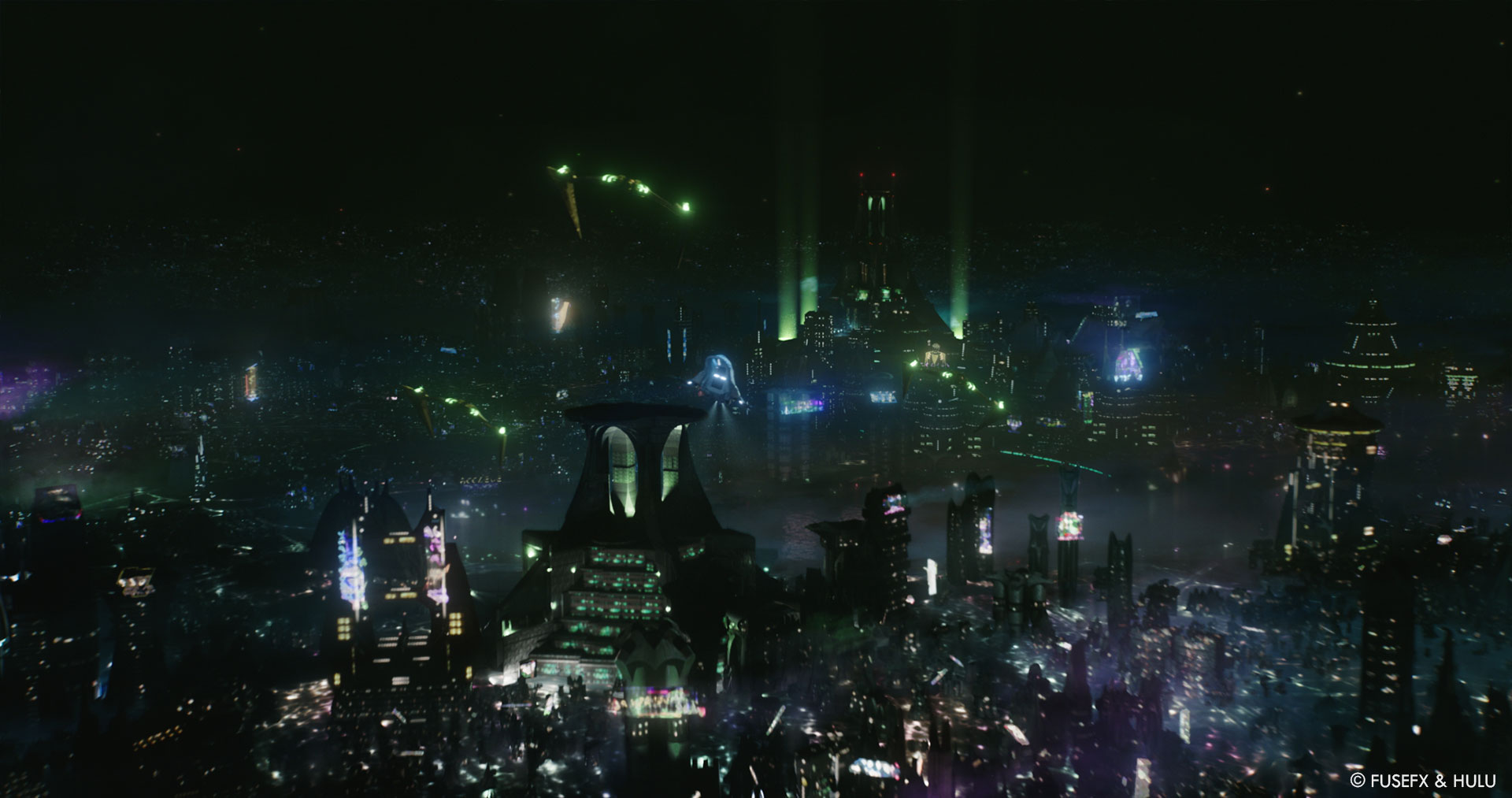
How did you handle so many shots in such a short schedule?
There are so many facets to this answer. First, I have to credit FuseFX’s pipeline and infrastructure. The support umbrella that the company was able to provide our team was invaluable. Secondly, I must say that Brooke Noska, the production side VFX Producer/Co-VFX Supervisor, was instrumental in our success. She produced this season like no other, letting us run wild when needed and reigning us in necessary. Joking aside, she was collaborative, communicative, timely with turnovers, and gave us concise direction and definitive notes. The pairing of Brooke and our stellar VFX Producer Samantha Hernandez ensured that S3 would succeed in every way.
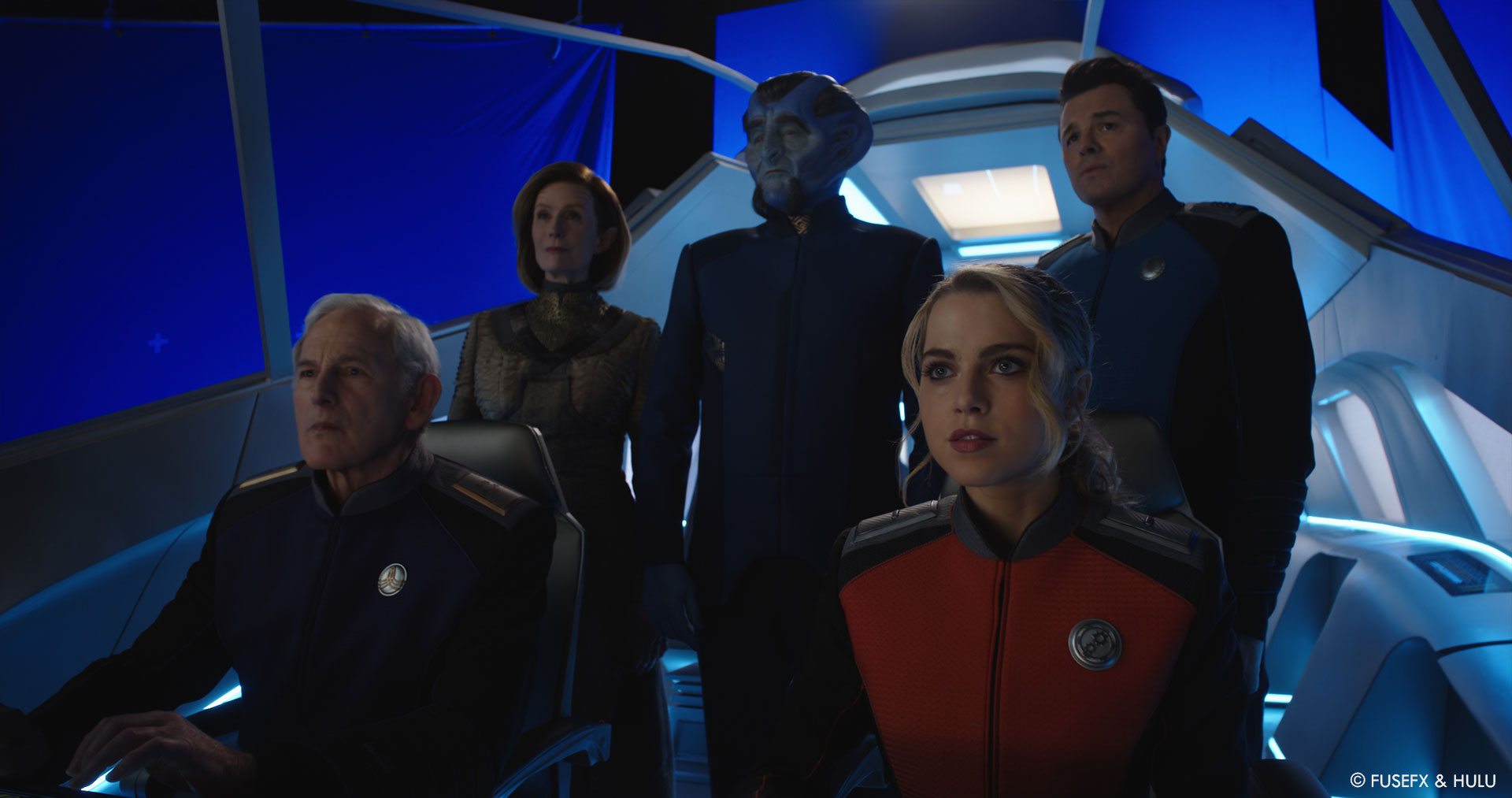
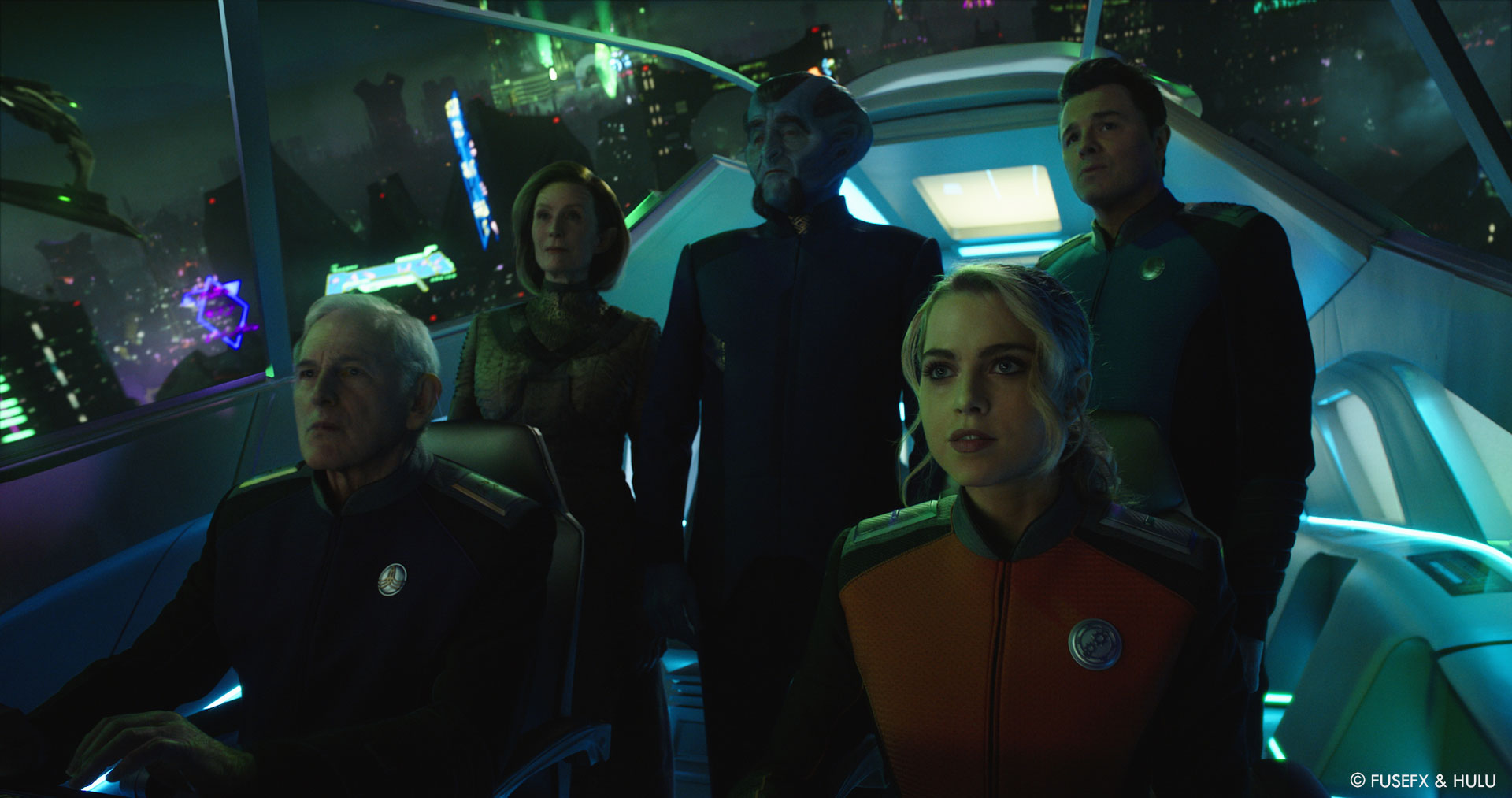
Can you elaborate on the creation of the USS Orville?
We had very little to do with the concept and design of the Orville; that credit goes to Brandon. He designed most, if not all, of the fleet in conjunction with Seth. However, we played a significant role in its evolution. The biggest of which came during this off-season. The Orville received a complete overhaul. We cut hundreds if not thousands of panel lines into the ship’s surface to give it more detail. We reworked its textures and shaders, which made lighting it much more cinematic. We spent a lot of time on this asset, but it was well worth the effort.
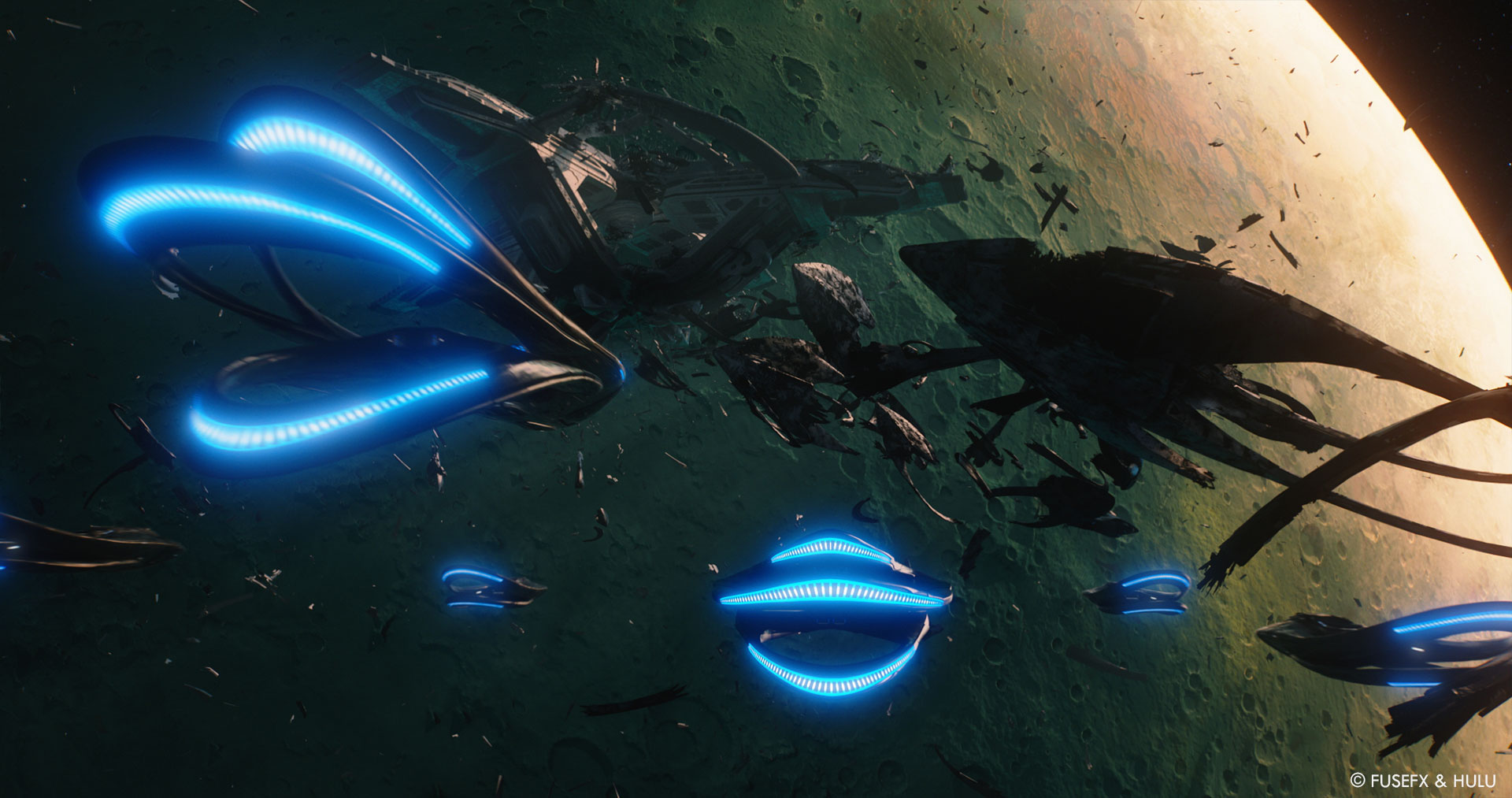
Can you elaborate on the design and creation of the various alien environments?
Among the various alien environments that we helped to create this season, Krill City, in Episode 304 stands out as a favorite. The architectural design of the city came from production. They depicted a damp, dreary, dimly lit city glowing with a multitude of neon and holographic lights lit up the night. We worked from numerous concept art stills and were provided previs by Brandon that included the basic layout of the city and its main city structures. From that, we developed hundreds of substructures, numerous hero buildings, aqueducts, and waterways that snaked throughout the metropolis. There was also a full stage set of the marketplace ground floor that gave us the physical sense of the city upon which we built. Utilizing Clarisse and Maya, we could extend the single story set into a towering multilevel city center, bustling with flying cars, sky bridges, misty rain, and animated holographic billboards.
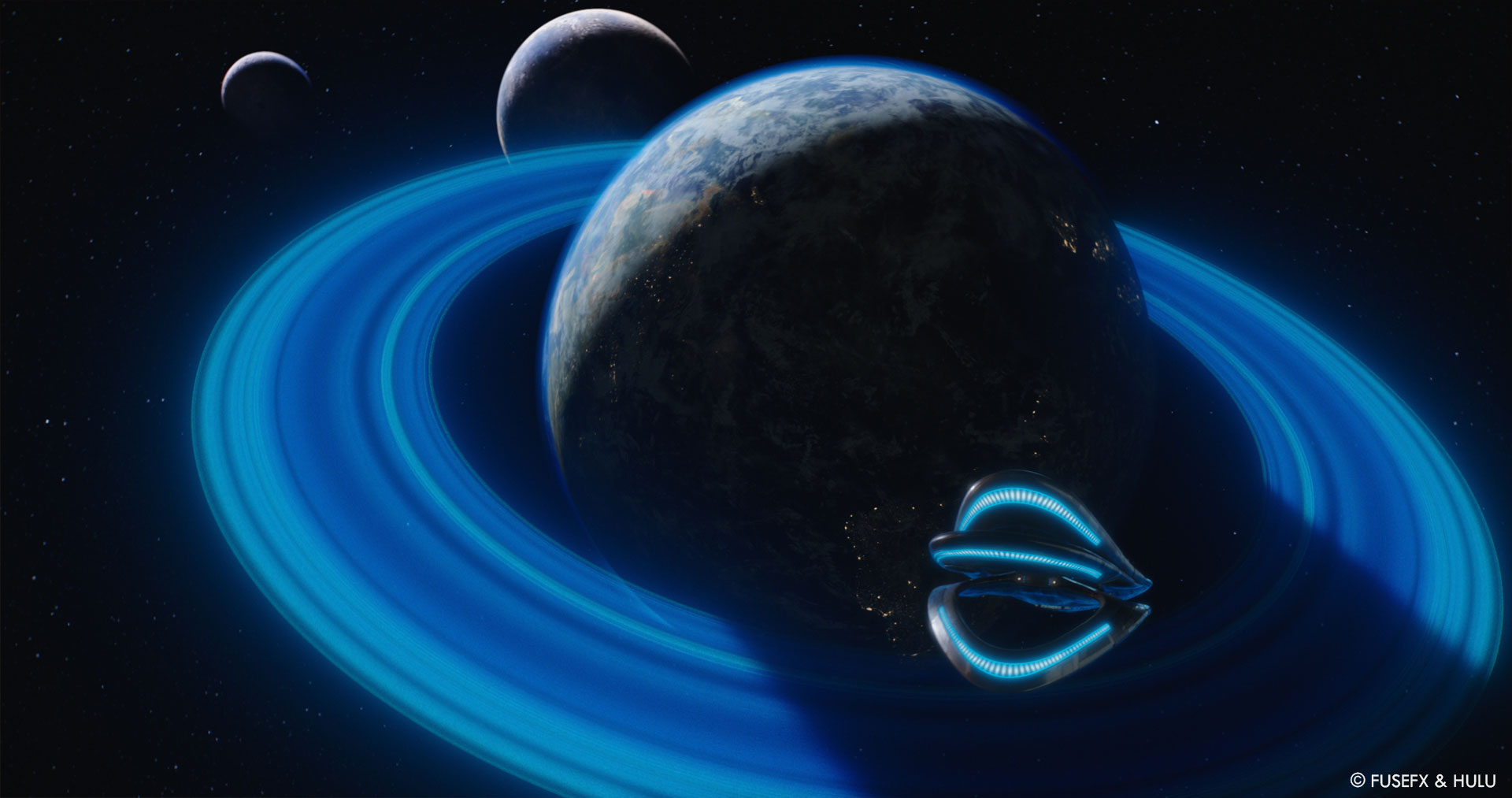
What was your approach to the various space battles?
In the first episode, we worked on the drone battle sequence, which primarily consisted of integrating bluescreen plates of Gordon into the new Union Pterodon fighter. Production built the front clip of the fighter attached to a gimbal, which allowed it to pitch and roll with the actor inside. At first, the plan was just to extend the missing parts of the ship digitally, but then we realized that it was more beneficial to fully rotoscope Gordon out and place him in a full CG ship and canopy. This gave us more latitude to light the ship and integrate it to the surrounding environment and not have to contend with set lighting that did not match the key light of the shot, etc. 34was also helpful, especially when adding reflections or interactive lighting from FX explosions and such; we had complete control over lighting. What follows was pretty basic: track and matchmove the plate, get a blocking pass to the client for approval and send to lighting. This is where much of our time is spent. There was a very specific lighting look that Seth and Brandon insisted on. Simply stated, it ensured that every ship was shaped with light, accentuating every line and every curve while flying in an environment with no apparent light source. It was a fine line between flat lighting and over lighting. Over the five-plus years of working on The Orville, we had that look dialed, though we didn’t take this for granted because now and again, there would be a shot that took many lighting iterations before it passed muster.
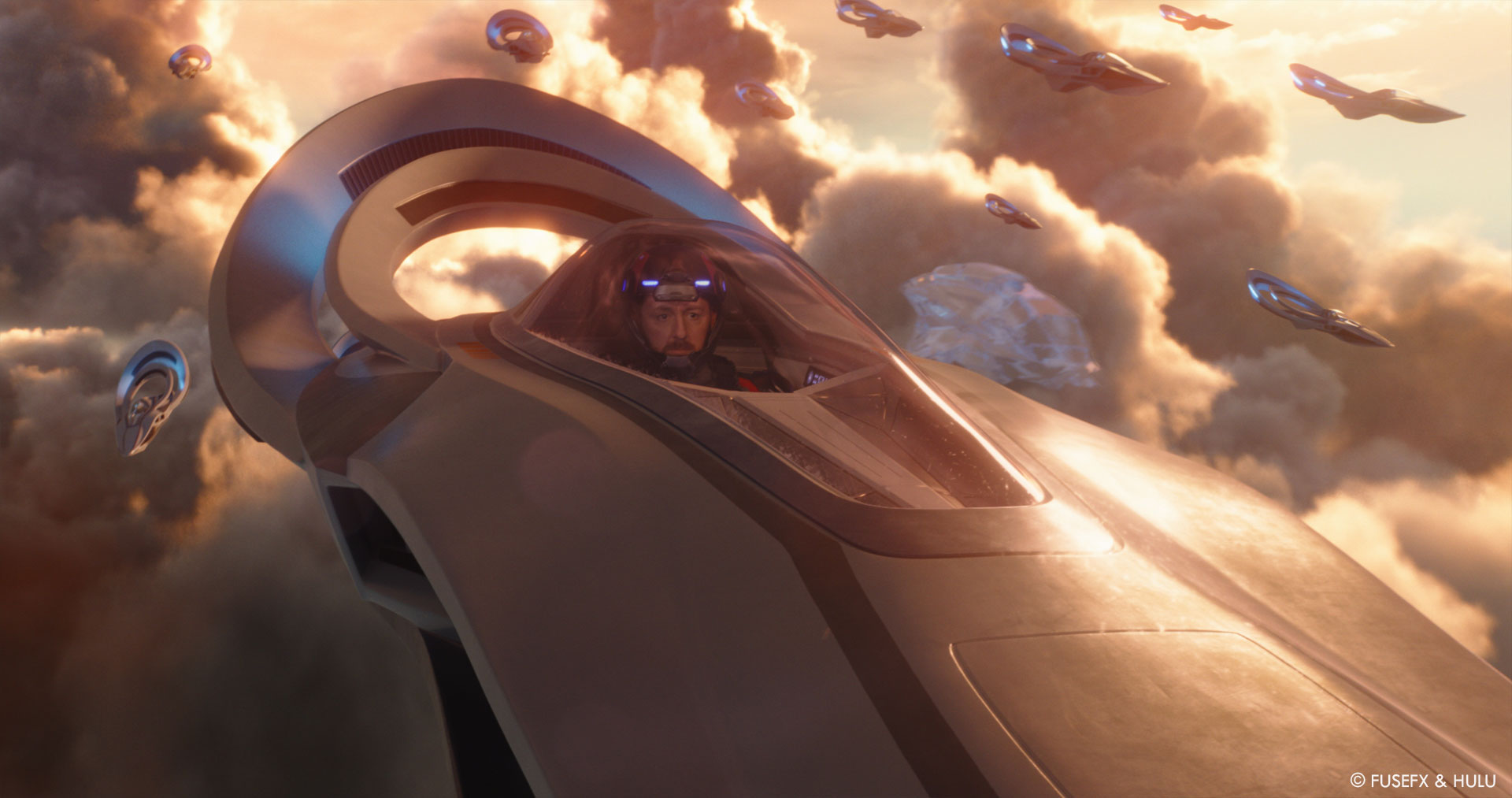
How did you manage many FX and CG elements during the battles?
Our robust CG pipeline was key. There are so many proprietary tools that assist in every manner of keeping track of these assets. Tools such as Camera Publishing/Loading, Model/Rig Publishing, Model/Rig Asset Prep Tool, Model/Rig Loading, Shader Publishing, Anim Publishing, and so on. I would be remiss if I didn’t mention the fact that it helped to have four senior CG supervisors and an FX Supervisor on board for the duration of the season. Many of whom are veterans going back to S1. That’s the long version. The short version is, teamwork, coordination, communication, division of labor, trust, an army of dedicated supervisors, producers, and artists, a direct line to Lindsey Kaiser, the LA Head of Studio, a proven pipeline and one massive render farm.
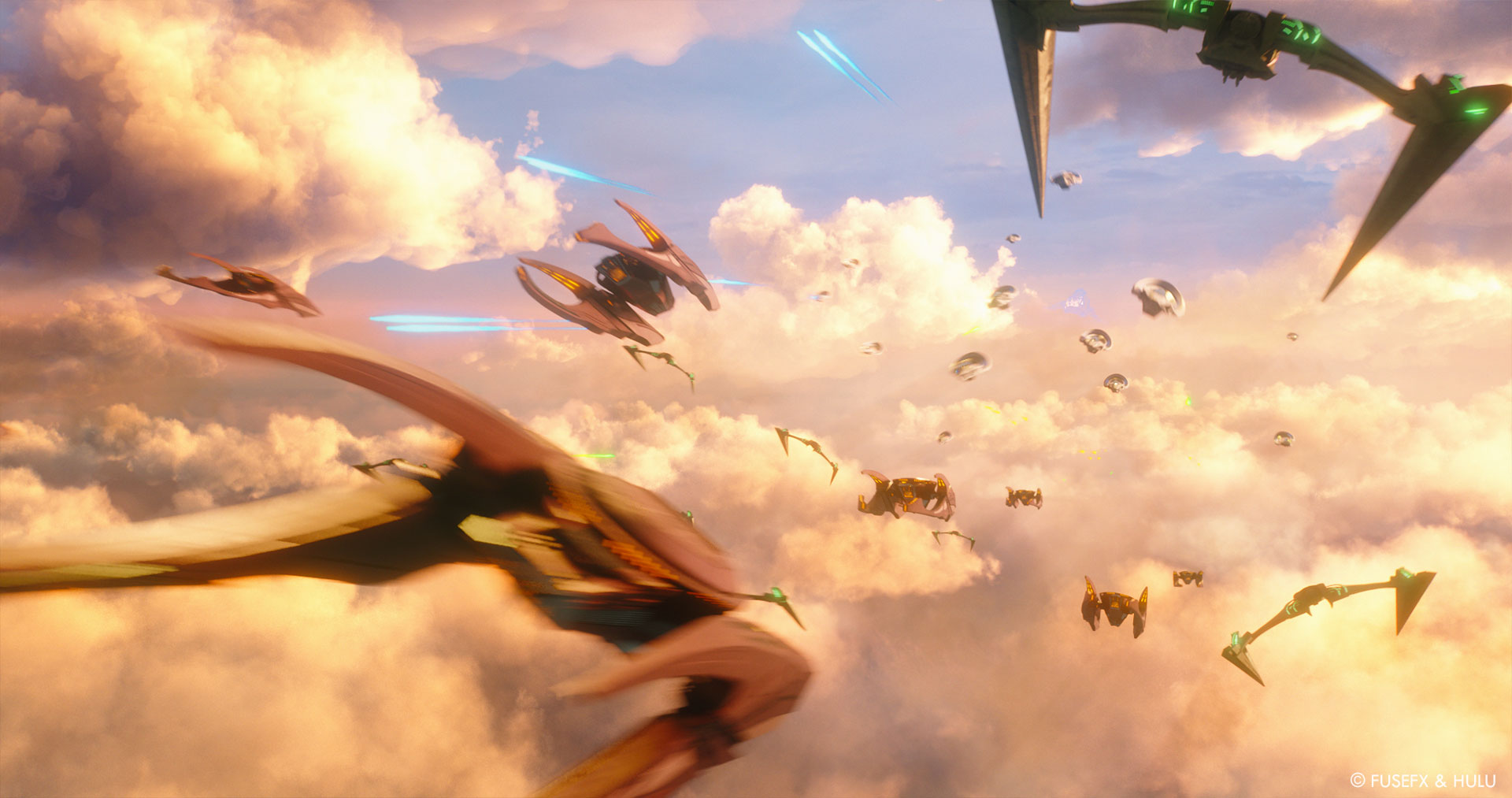
Did you use procedural tools to help you?
Yes, indeed. Over three seasons of being on The Orville, we must have written a hundred tools in Nuke to proceduralise tasks. Everything from matching grain, dealing with lens distortion, planet libraries, AVO color grading, and more intricate like attaching 3D provided blaster axis points to any number of ships in 2D to control which direction they shot, all at the click of a few buttons in Nuke—never having to go back to CG to re-render laser blasts that were wrong for any given reason. I think that this tool alone shaved weeks off our schedule. Ya… we had a lot of laser blasts.
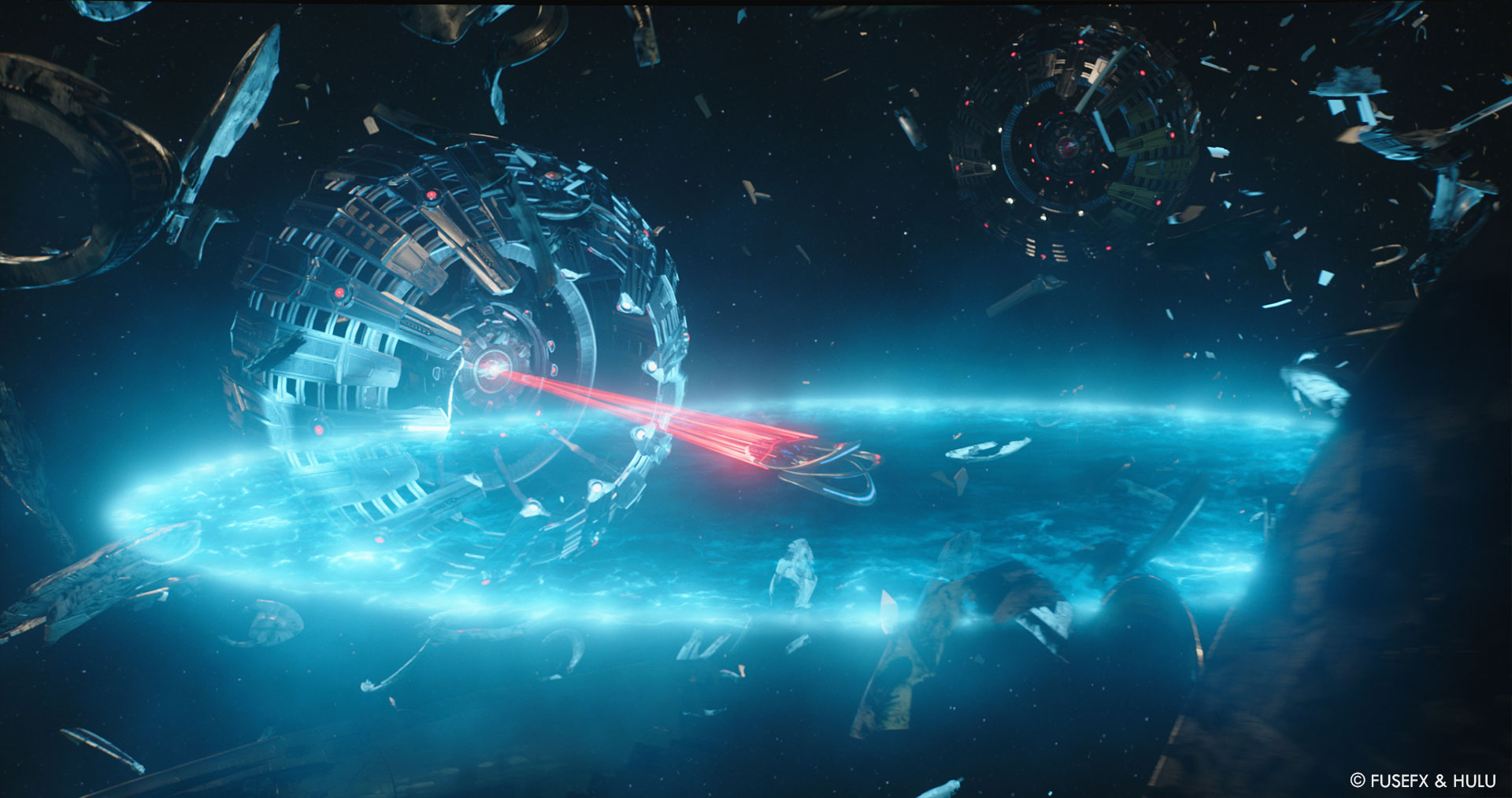
Which sequence or shot was the most challenging?
Randall in Episode 303. It was a 30-foot-tall animated creature, part T-rex, part Rankor. Sculpting, modeling, and its look development went as usual. Where things became challenging was when we got into Ziva for its muscle system. Though the results came out beautifully, the process of getting muscle movements to behave properly took some time.
Much credit has to go to Patrick Horne, CG supervisor and head of our Creature Department. He made Randall his own personal crusade. Another challenge, even more significant than the muscle system, was getting the animation right. As I have mentioned earlier, Brandon’s background is in CG, so let’s just say nothing got past him when it came to CG. And then there is the fact that Seth has an extensive background in animation; he had very specific notes on animation, all valid, of course, but did add time to our schedule because of how meticulous he was.
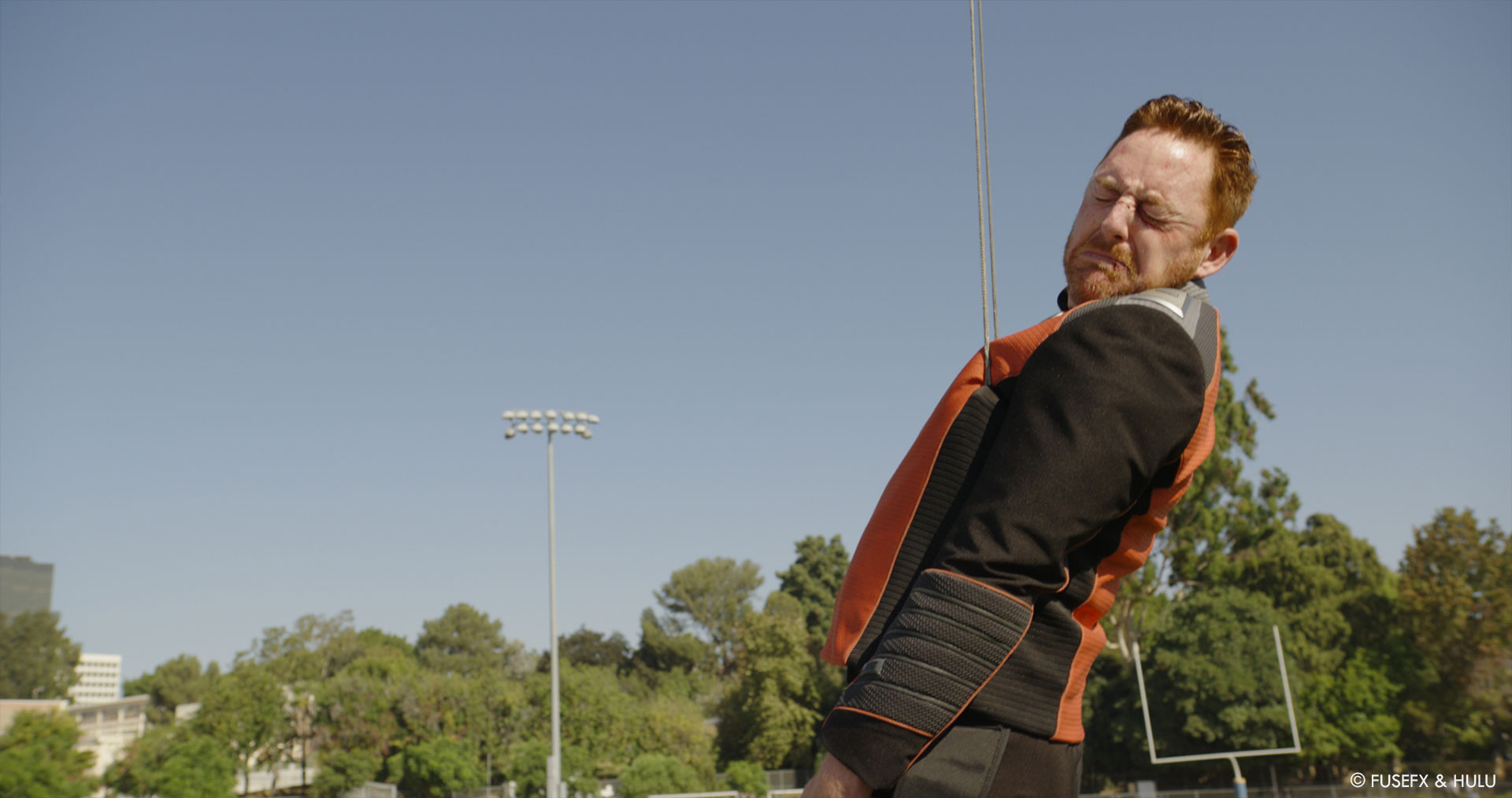
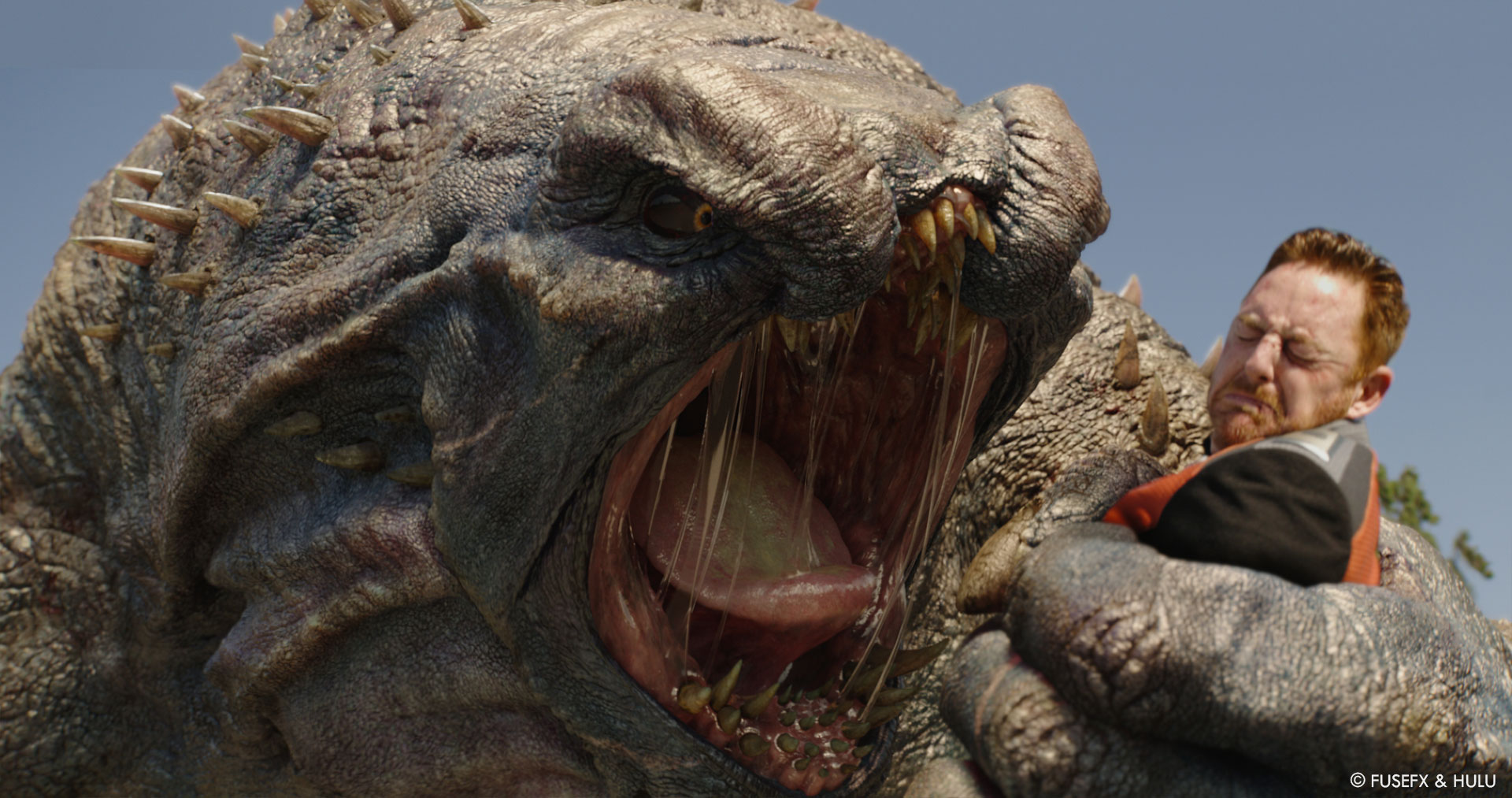
Is there something specific that gives you some really short nights?
Most of my short nights had to have come from the unknown. It was thoughts like, « What if Seth changes his mind? Do we have enough time to pivot? » That’s what kept me awake at night. Another was the fear of melting the farm. By the end of the season, we loaded up the farm so heavily at night I thought I smelt burning wires in my sleep. Thankfully, we had AWS on our side.
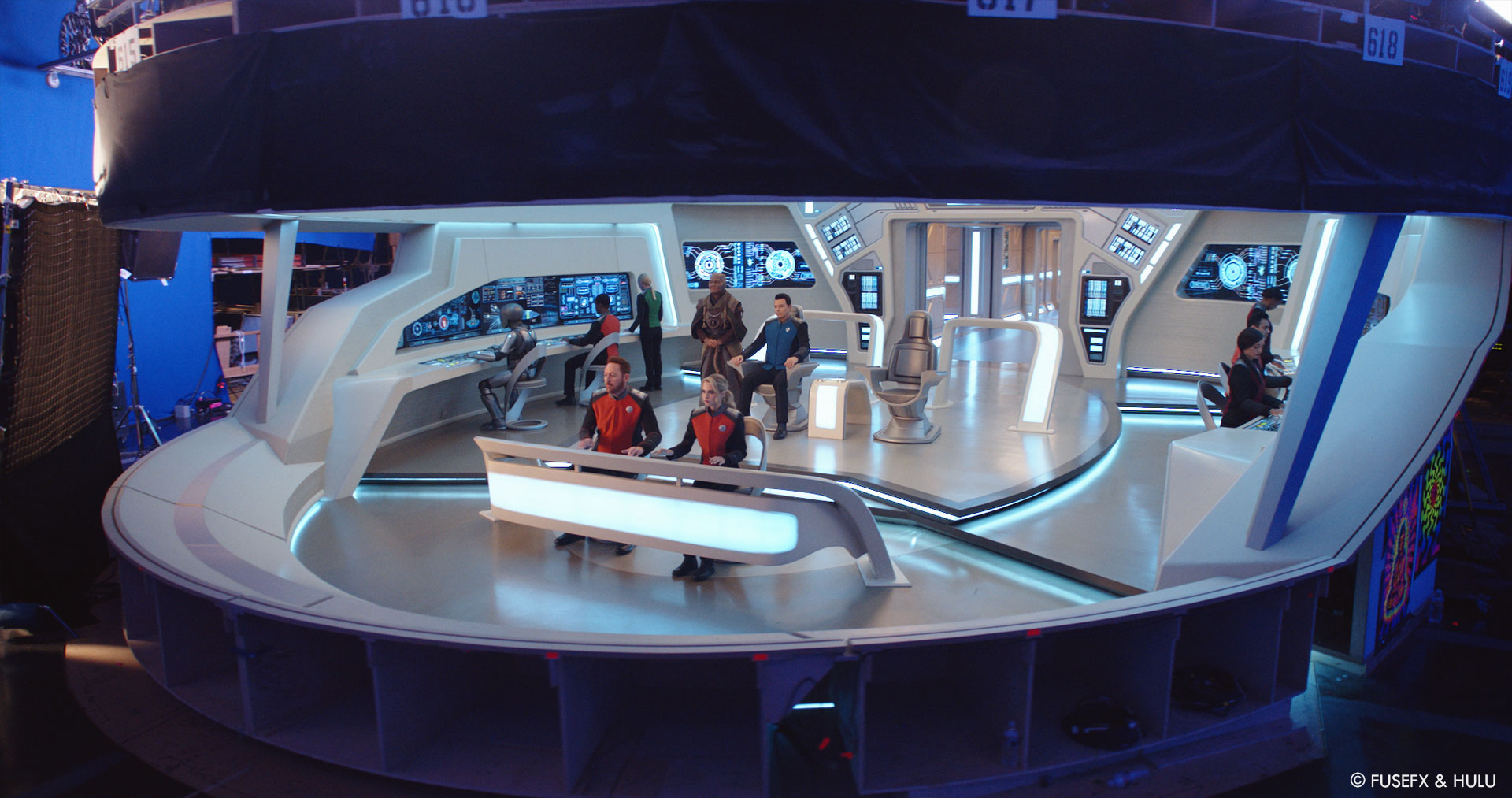
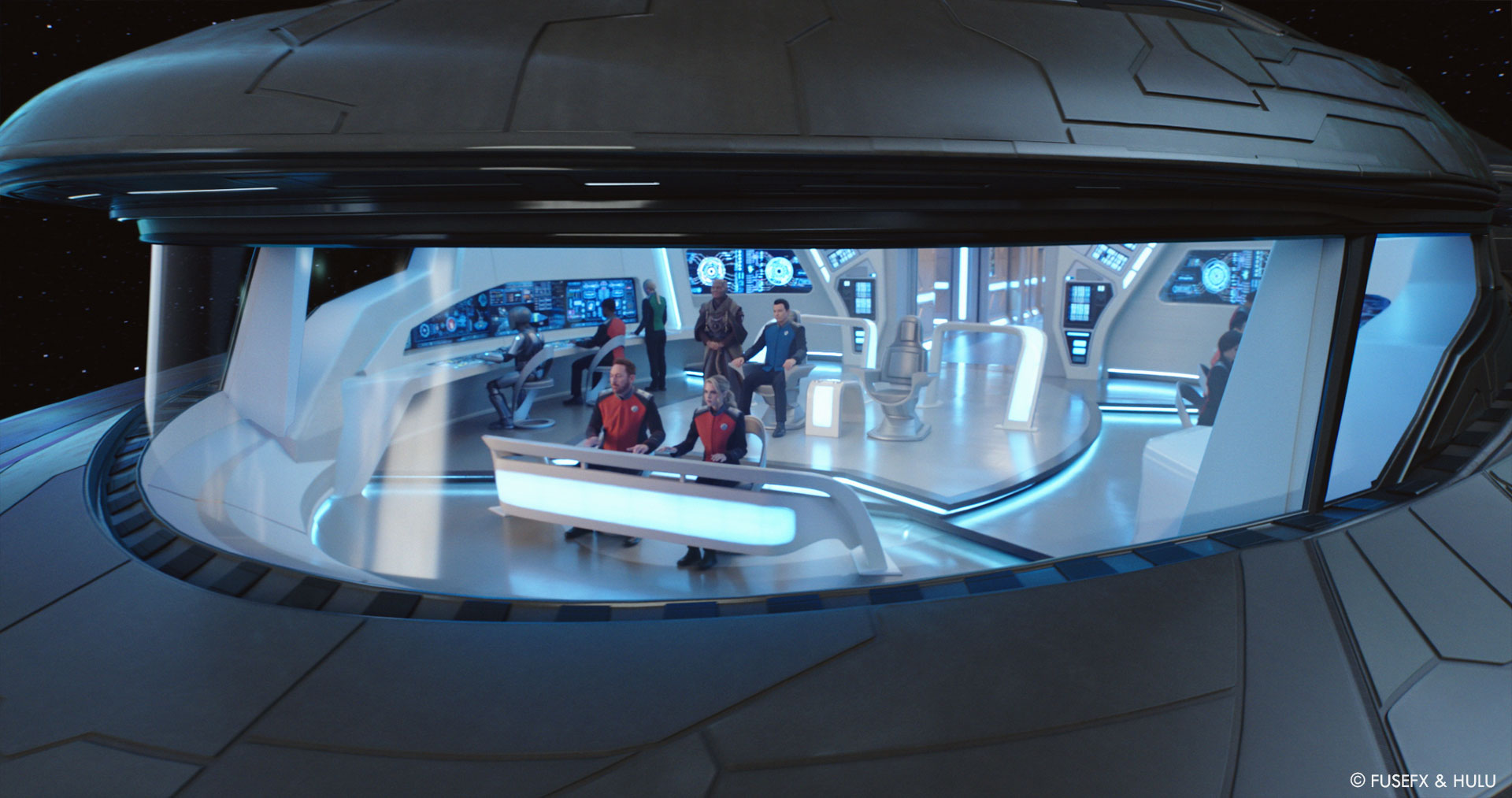
What is your favorite shot or sequence?
It is a shot in Episode 309. A simple establishing shot of the Orville docked at the Space Station with another Union ship slowly passing frame. 99% of anyone who saw the shot would see it as just that, a beautiful establisher. It’s my favorite because, with Seth’s permission, we could re-animate and re-name the passing ship after a fallen teammate. The ship’s name was CCV-178 SCHRATZ. Here’s to you, John.
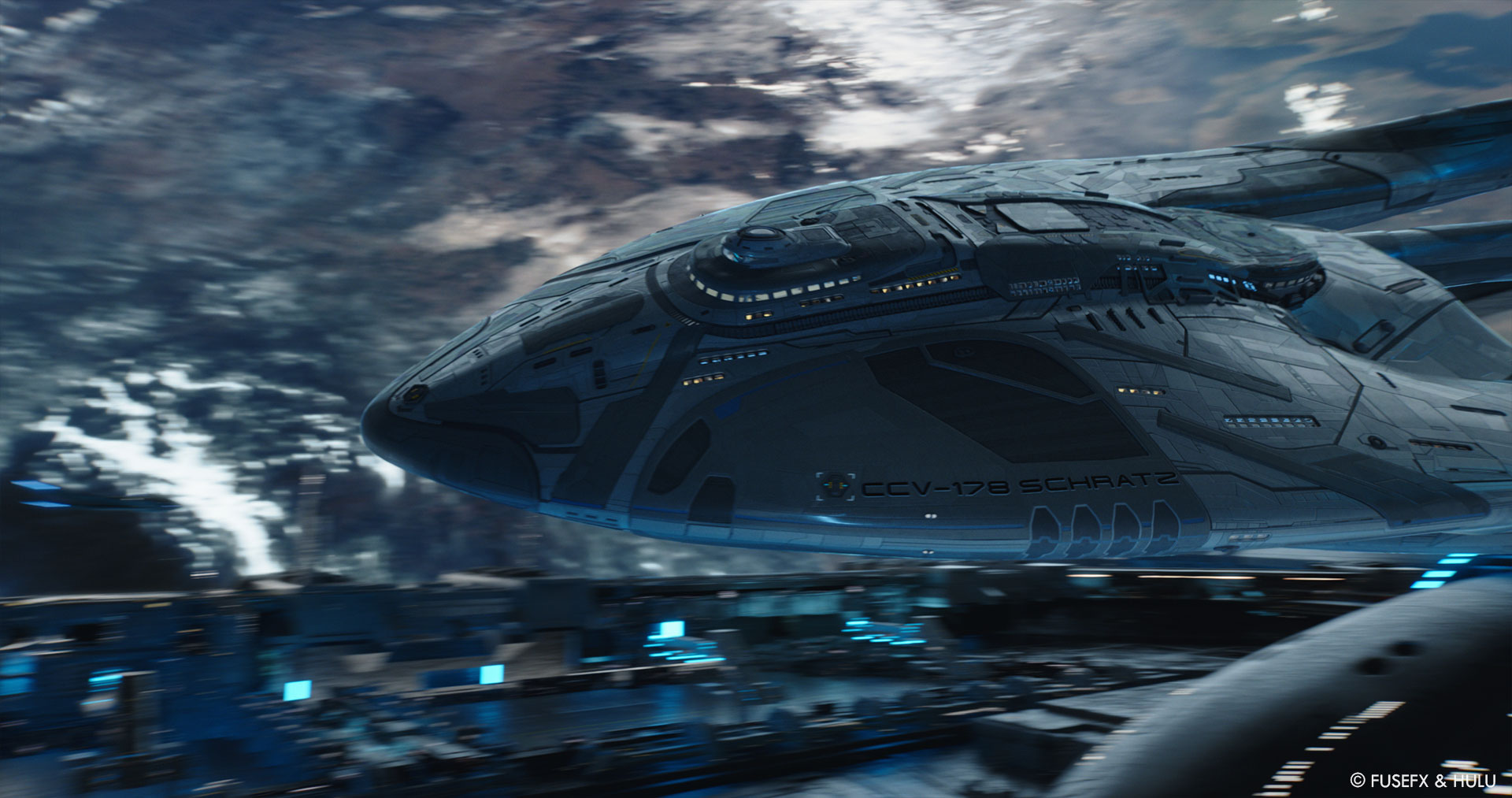
What is your best memory of this show?
As it turns out, the best memory of the show had nothing to do with the physical work but much to do with Seth himself. Ten of our team were invited to the premiere. At the reception, Seth came over to us and spent a good 30 minutes talking to us as individuals and expressing how much he appreciated each and every one of us. Remember, he had a thousand other people there who wanted his attention. So for a showrunner taking time out for a vendor, this was a moment to be cherished.
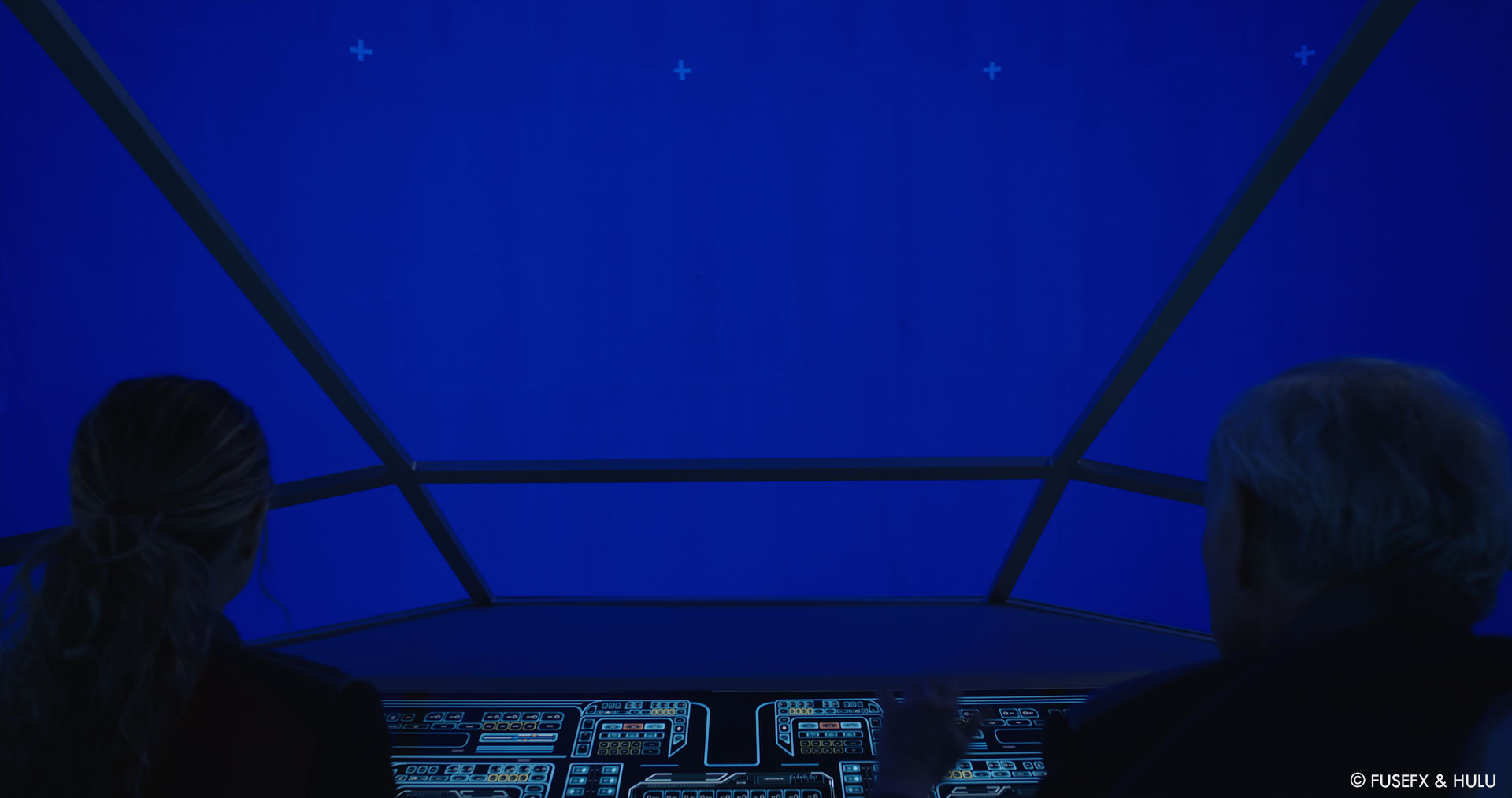
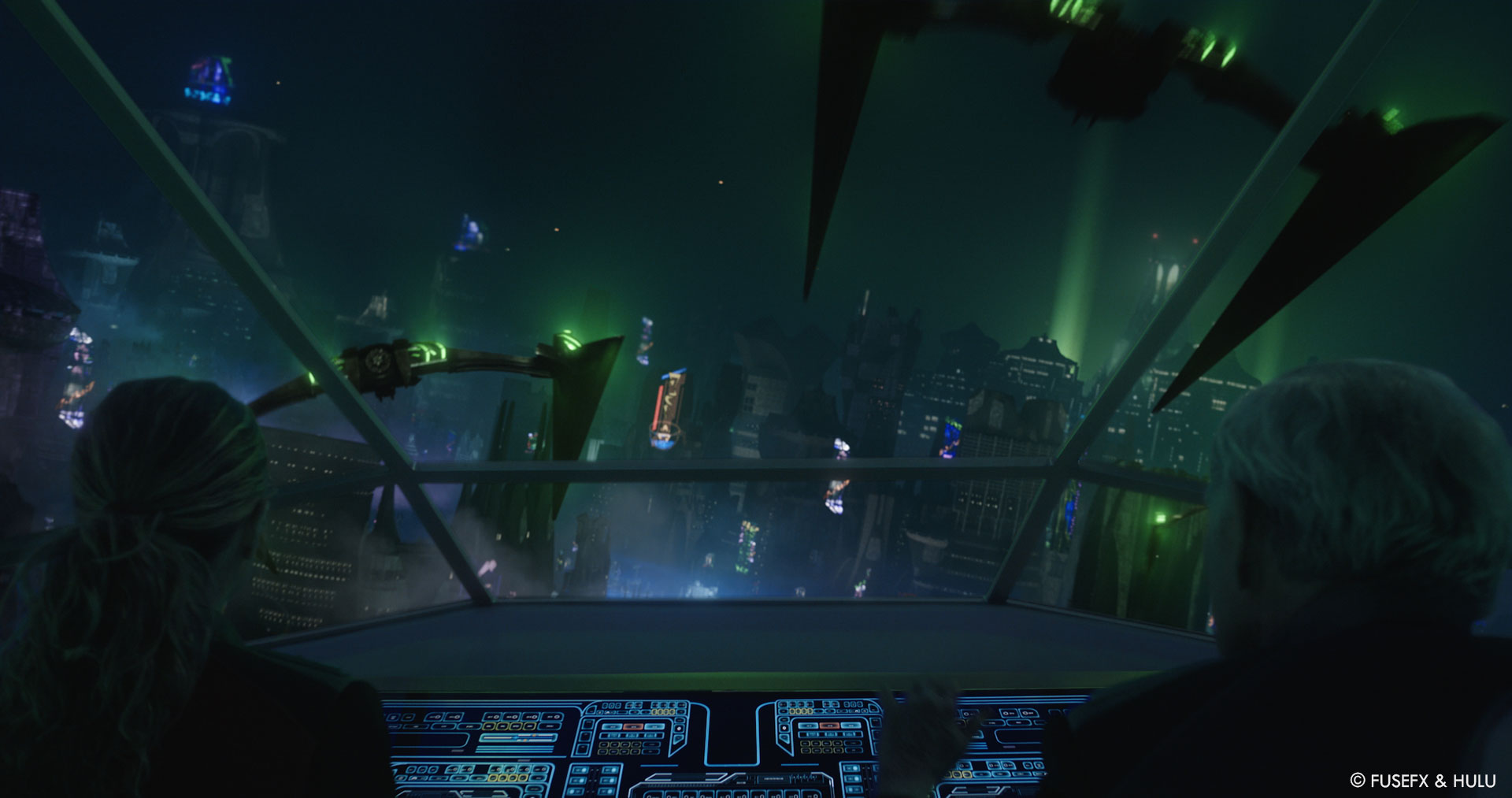
How long have you worked on this show?
Most of the senior staff and I have been on The Orville since S1 starting in 2017. At first, FuseFX only had a small role in the show. Primary vendor, we were not. But one episode at a time, we gained momentum. By the start of S2, we were entrenched as one of three primary vendors.
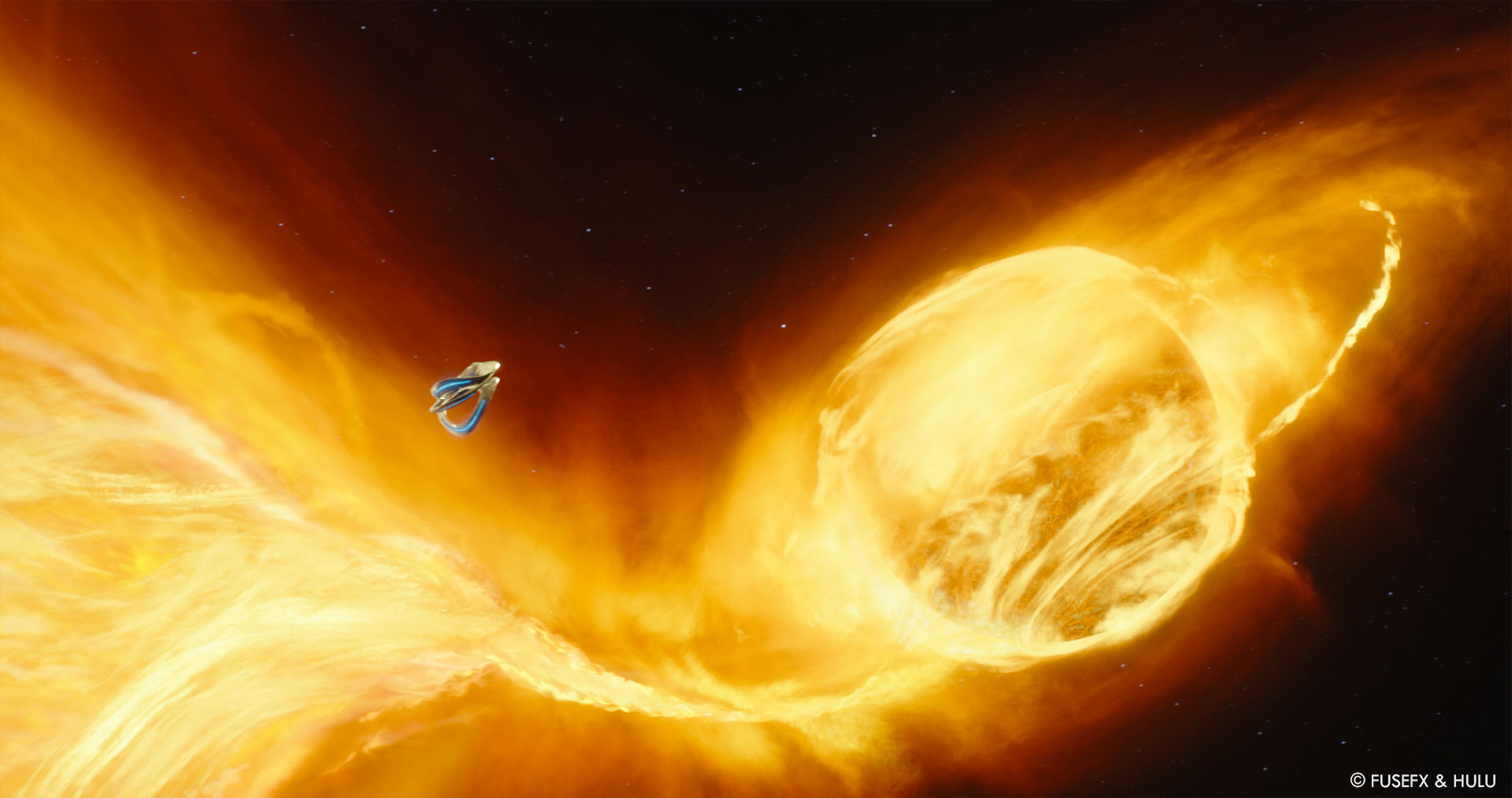
What’s the VFX shots count?
We delivered roughly 2100 shots this season in addition to retrofitting the Union fleet, which took the better part of 4 months to complete.
What was the size of your team?
The team that we had for this season was unprecedentedly large when thinking in terms of episodic television. We had enough people to staff four shows fully. The leadership team alone consisted of three VFX/DFX supervisors, four CG supervisors, three compositing supervisors, two VFX producers, one associate producer, and three coordinators. All of whom were dedicated to just The Orville S3 for nearly three years. But then, we can’t forget the cast of trackers, animators, look developers, FX artists, previs artists, lighters, and compositors. It was the largest and most talented team I have ever had the pleasure of working with.
What is your next project?
A few exciting projects are on my horizon, all bound by NDA’s. Sorry, but you know how that goes. But for the time being, I am content with taking it slow, finding time for family and friends, and maybe catching a fish or two. I say that today; come tomorrow, I’ll be banging on Seth’s front door pleading for a fourth season of The Orville, not that I know where he lives.
A big thanks for your time.
// The Orville: Season 3 – VFX Reel – FuseFX
// The Orville: Season 3 – Trailer
© Vincent Frei – The Art of VFX – 2022






I’m very impressed to see the diversity in Fuse’s supervision teams. Bravo.